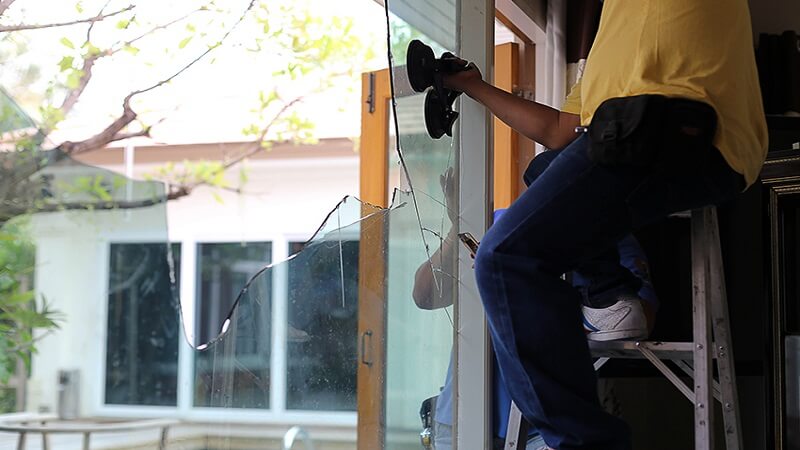Accidents happen, and broken glass at home can pose serious safety risks if not handled properly. Whether it’s from a shattered window, a dropped glass object, or a damaged decorative piece, sharp fragments can cause cuts or injuries. Taking immediate precautions, such as clearing children and pets from the area, wearing protective gloves and shoes, and carefully containing the shards, is essential to prevent harm. Proper cleanup techniques, including using a broom, vacuum, or damp cloth for small fragments, help ensure the space is safe again.
In some cases, broken glass may require professional attention to restore both safety and functionality. Engaging a reliable residential glass repair service ensures that damaged windows, doors, or fixtures are replaced or fixed correctly, maintaining your home’s integrity while minimizing the risk of future accidents. Prompt action not only protects your household but also extends the lifespan of your glass installations.
Immediate Safety Measures
As soon as the glass breaks, ensure the area is clear of children and pets. Guide everyone to a safe distance, and cordon off the immediate vicinity to prevent anyone from unknowingly stepping on shards. Avoid making direct contact with the glass and do not attempt to pick up pieces with your bare hands under any circumstances. If breakage involves a window or exterior door, block off the area to limit exposure to rain, wind, or drafts until a replacement can be made.
Protective Gear
The importance of wearing the right gear is often underestimated. Start with heavy-duty, cut-resistant gloves to prevent lacerations. Sturdy, closed-toe shoes shield your feet from stray fragments. Wearing safety goggles keeps particles out of your eyes, while long sleeves and pants offer an extra barrier for your skin. Protective gear is essential not only for the person cleaning up, but also for anyone entering the area before it has been fully cleared.
Cleaning Up Broken Glass
Begin by wearing gloves or using tongs to collect large pieces and place them in a sturdy container. Use a broom and dustpan to sweep up smaller shards, but avoid vacuuming larger fragments to prevent damage. For tiny slivers on carpets, use a vacuum cleaner after removing the bigger debris. To remove tiny glass slivers, press a damp paper towel or bread slice onto the area. Avoid using cloth mops, as glass particles can embed and cause injury.
Disposal of Broken Glass
Improper disposal of broken glass can injure sanitation workers and members of your household. Always use a thick-walled, rigid container to store collected shards—an empty coffee can, plastic jar, or a box lined with several layers of newspaper works well. Tape the lid or box shut and write “Broken Glass” prominently on the outside. Do not place loose glass directly into trash bags, where it can easily pierce the bag and harm others.
Preventive Measures
To minimize future glass breakage, plan ahead by installing tempered or laminated glass, particularly in windows, doors, and high-impact areas. Reinforce existing glass with safety film and perform regular inspections for damage. Secure mirrors, glass tables, and similar items to prevent accidents and injuries. Also, educate children about the dangers of rough play near glass to maintain household safety.
When to Seek Professional Help
Major damage, especially to structural elements such as insulated windows or sliding doors, should be addressed by a professional. A glass repair expert possesses the necessary skills and tools to perform safe and proper repairs, reducing the risk of injuries, leaks, energy loss, or future accidents that might occur from improper DIY repairs.
First Aid for Glass-Related Injuries
For minor cuts, rinse the wound thoroughly with water, apply gentle pressure with a clean towel to stop any bleeding, and cover it with a sterile bandage. Avoid attempting to remove embedded glass yourself; instead, seek immediate medical attention. For significant injuries, persistent bleeding, or if infection is a concern, contact a healthcare provider or visit the nearest urgent care facility. Always watch for signs of infection in the days following an injury, such as redness, swelling, or the presence of pus.
Conclusion
A well-defined approach to managing broken glass helps ensure household safety. Wear protective equipment, adhere to correct cleaning procedures, and contact professionals when necessary. Remain alert, respond promptly, and prioritize safety above all else.

